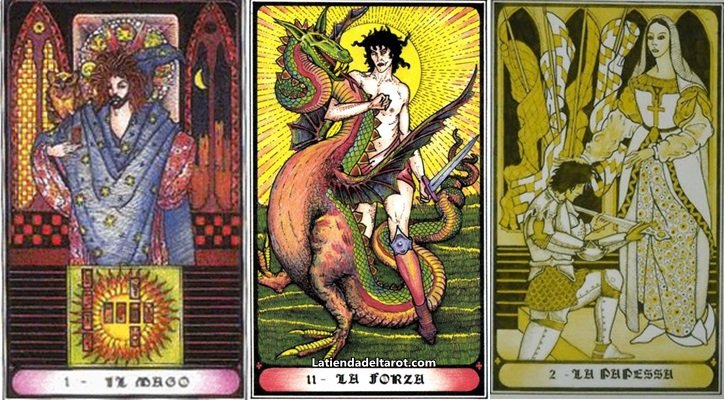Your Legal Resource
Tarocco Storico Del Palio Di Pistoia By Mark Filipas
Tarocco Storico del Palio di Pistoia
Amerigo Folchi, 1985
The translated name of this Italian deck is The Historical Tarot of the Town of Pistoia. It is one in a long line of beautiful Tarot decks by Amerigo Folchi. This deck was printed by Edizioni del Solleone in 1985 as a limited, numbered edition of 2000 sets. Folchi�s artwork is detailed, rich, and this deck is filled with commemorative references.
The booklet that is included with this deck is actually a folded sheet of paper, and the writing is entirely in Italian. On one side of the sheet is the history of Pistoia as told by Folchi, who uses each of the Trump names to illustrate characters or events by inserting them into the appropriate place in the story. On the other side of the page is a historical commentary by Giancarlo Jori, the author of several books on Italy�s history.
The story of the ancient cities of Italy involves their struggle for independence from the Emperors and Bishops that fought to dominate these provinces during the first millennium. Having been alternately ruled by Rome, conquered by the Lombards, and controlled by Bishops, Pistoia finally gained independence by the early 1100s and established themselves as a Free Commune, or municipality. Several major Italian cities were becoming independent and powerful city-states during the 11th century. By breaking free from the nobles and Emperors who sought to control these provinces from a distance, these Communes were gradually building their self-identities as cities, as opposed to identifying themselves with large empires or countries. Folchi�s Strength card, an archetype of St. George, shows the bravery of a Paladin who symbolizes the overthrowing of a dark historical condition.
Pistoia, a province of Tuscany, officially enacted its own statutes in 1177, being one of the first Italian city-states to do so. They created an executive council governed by one Standard-bearer of Justice and eight Elders of the People, called the Anziani. These were Pistoian citizens who were selected by lot to serve two-month terms. Above them, serving six-month terms, were the chief administrative officers, the Captain of the People, and the Podesta (Folchi�s Emperor card). These officers could not be Pistoian or even Tuscan was closely monitored and was allowed limited social contact with Pistoians. This was to help the citizens to feel safe in bringing charges against an official.
The thirteenth-century was a major period of prosperity for Pistoia. Folchi writes that �the economic, cultural and artistic activity, blooming exuberantly at this time, made the city very strong. The Pistoiese erected an austere Communal Palace, in part to symbolize the strength of the single Commune which they now constituted (the Sun card).�
The Minor Arcana utilize the crest symbols of the four Pistoian districts. These symbols are represented on the four doors to the city of Mura and are featured prominently on the four Aces. The St. Mark Door shows a gold lion, associated with Cups; the Carratica Door shows a green dragon, associated with Swords; the Lucchesi Door shows a white deer, associated with Batons; the Borgo Door uses a white griffin, associated with Coins.
Folchi writes that �The Court figures of each respective suit symbolize the representative Power of the just Wards (King and Queen), the direct participation of the tournament (the Knight) and a Drummer who opened the parade (the Fante). On the eve of the regional festivity, it was customary to carry the relic of St. Iacopo in procession through the city streets. It was placed under a rich canopy and upon a portable, shouldered altar, while encircled by 20 or 40 children carrying lit candles of beeswax. (the Chariot).�
In 1306 Pistoia was conquered by Florence, marking the start of the city-state�s decline. It eventually lost its autonomy and became part of the Florentine possessions in 1530. It was in 1859 when Pistoia was finally united with the Kingdom of Italy.
Amerigo Folchi has created more than ten complete Tarot decks since 1984. These are generally printed as limited, numbered editions by their Italian publishers, so his decks are not readily available in the United States. I consider this deck a great example of Folchi�s artistic ability and of his talent for investing Tarot with worthy themes.
Author: Amerigo Folchi
Number of Cards: 79
Card Dimensions: 4 7/16" x 2 9/16"
Publisher: Edizioni del Solleone (1985)
Language: Italian
